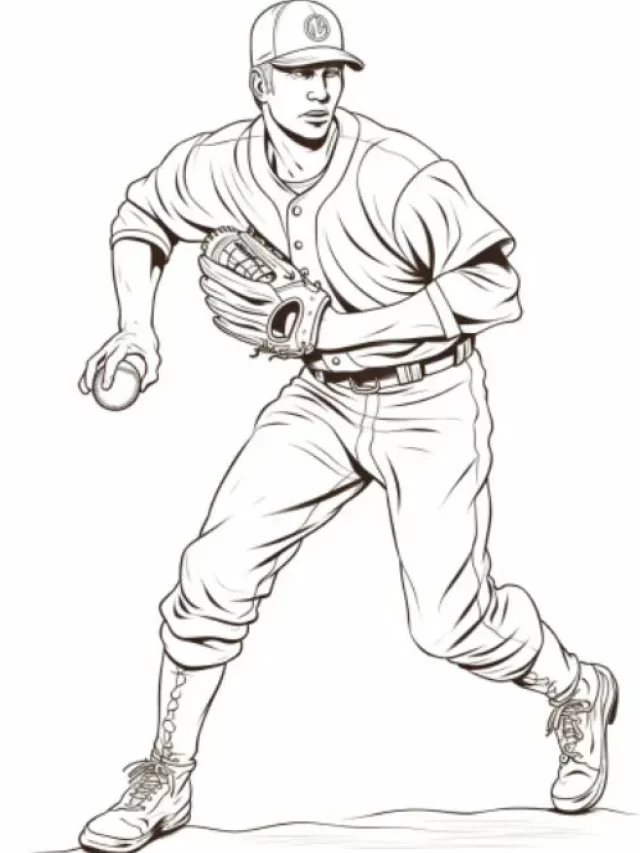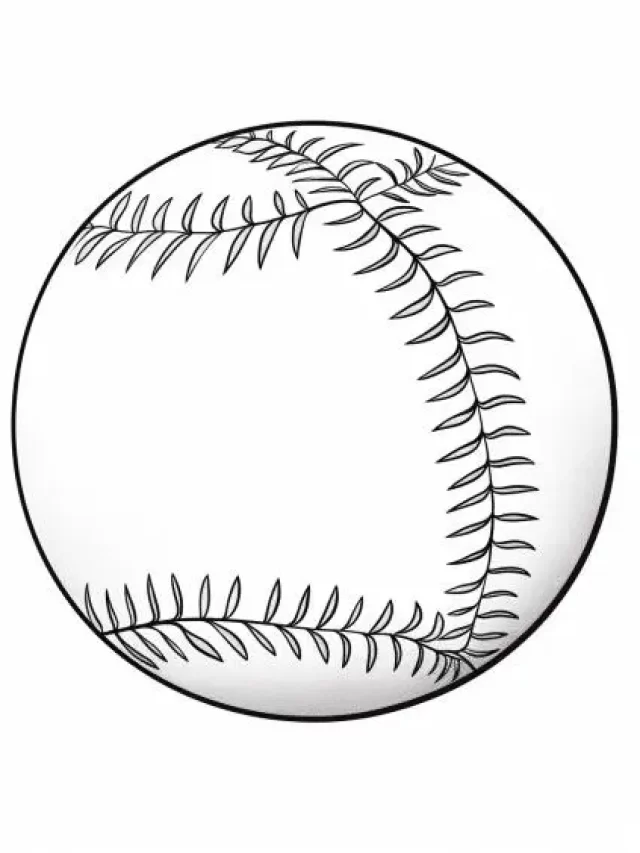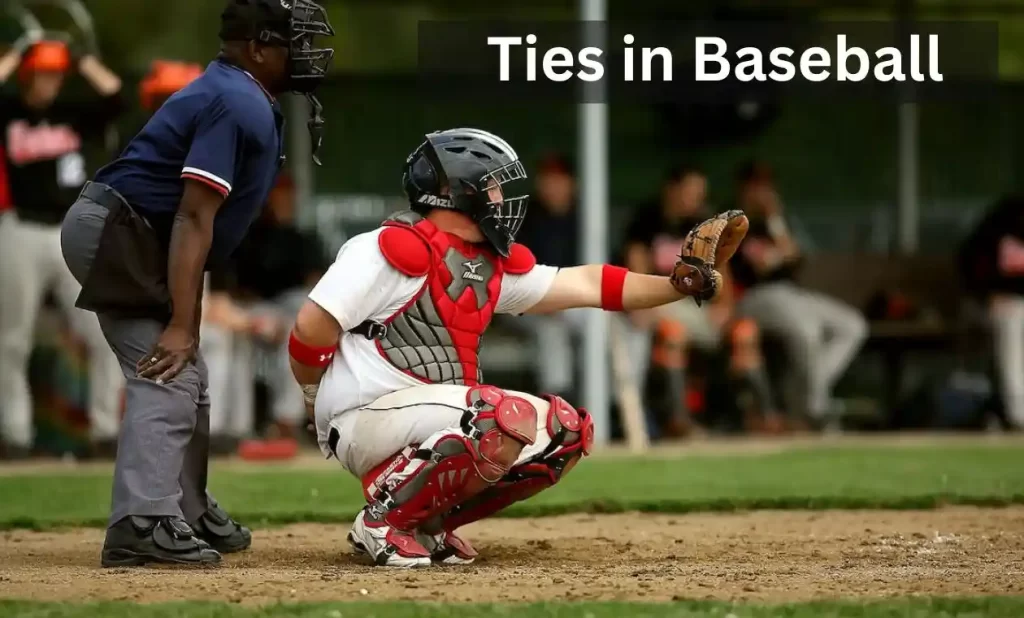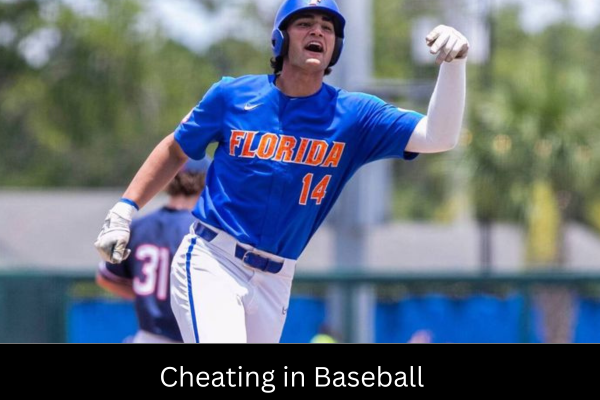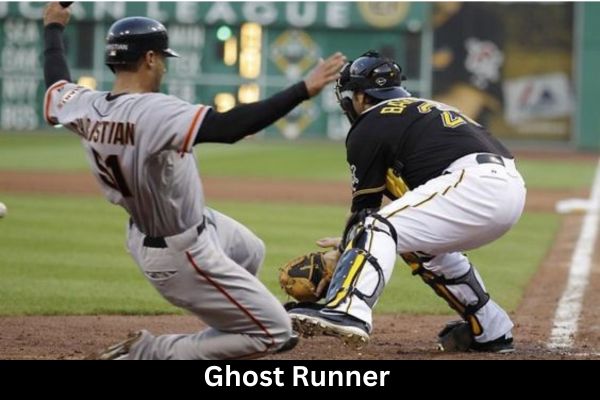 Image Credit-Pinterest
Image Credit-Pinterest
The Ghost Runner Rule in baseball adds a fascinating layer to the game’s strategic landscape. Introduced to accelerate gameplay and inject excitement into extra-inning situations, this rule has its roots in a need for efficiency.
The Ghost Runner Rule allows the offensive team to start their inning with a baserunner already on second base. This “ghost runner” represents the player who made the last out in the previous inning. The idea is to create scoring opportunities from the get-go, intensifying the pressure on both teams.
The genesis of the Ghost Runner Rule traces back to experimental phases in minor league baseball and international competitions. Major League Baseball (MLB) adopted this rule, albeit temporarily, to address prolonged extra-inning games. The rule’s implementation aligns with broader efforts to enhance the sport’s appeal, particularly to time-conscious fans.
Initially met with skepticism, the Ghost Runner Rule has gradually become a prominent fixture, offering a compromise between tradition and innovation. Its deployment in various leagues worldwide has sparked debates among baseball enthusiasts, stirring conversations about the balance between preserving the game’s essence and adapting to modern preferences.
As we delve deeper into this rule, we unravel its scoring intricacies, explore its meaning in the baseball lexicon, and understand its nuances compared to conventional backyard rules. Join us on this journey through the Ghost Runner Rule, where tradition meets innovation on the diamond.
Scoring with the Ghost Runner: Decoding Baseball’s Tactical Chess
Scoring with the Ghost Runner introduces an accelerated dimension to baseball, presenting both challenges and opportunities for teams aiming to capitalize on strategic nuances.
How to Score a Ghost Runner in Baseball
When a team initiates their inning with a ghost runner positioned on second base, the dynamics of scoring transform. Advancing the ghost runner strategically becomes paramount, with bunts, sacrifices, and well-timed hits taking center stage. The offensive team seeks to convert this advantageous position into a tangible run, while the defense strategizes to thwart their efforts.
Does the Ghost Runner Count as an Earned Run?
A pivotal question arises: Does scoring with the ghost runner contribute to an earned run for the pitcher? While the ghost runner’s presence influences the run’s origin, baseball’s intricate scoring rules demand careful consideration. Understanding how earned runs are attributed in the context of the ghost runner rule adds depth to evaluating a pitcher’s performance.
Key Considerations in Scoring
Scoring with the Ghost Runner extends beyond the basic act of crossing home plate. Umpires and scorekeepers must navigate the rule’s intricacies, considering the ghost runner’s journey and the contributing plays. Determining earned runs, unearned runs, and their impact on pitcher statistics requires a nuanced understanding, highlighting the rule’s influence on the statistical landscape of the game.
As we explore the tactics of scoring with the Ghost Runner, we delve into the strategic maneuvers that teams employ and examine the implications on both offensive and defensive facets of the game.
Exploring the Ghost Runner Concept: Unmasking Baseball’s Invisible Catalyst
The “Ghost Runner” concept in baseball introduces a spectral figure onto the field, symbolizing the potential for instant offensive action. As we embark on unraveling this intriguing facet of the game, we delve into its meaning and distinguish it from backyard interpretations.
What Does “Ghost Runner” Mean in Baseball?
In baseball terminology, a “Ghost Runner” embodies the strategic ploy of placing a baserunner on second base at the start of an inning without a tangible player having earned that position. The term encapsulates the ephemeral yet impactful nature of this unearned advantage, a concept that has become a defining feature of extra-inning scenarios.
Unlike a conventional baserunner, the Ghost Runner materializes from the shadows of the previous inning, representing the player who made the last out. This ethereal presence on the base paths adds a layer of unpredictability, prompting teams to craft innovative offensive strategies from the very first pitch.
Differentiating the Ghost Runner Rule from Your Backyard Rule
While backyard baseball may involve its own set of imaginative rules, the Ghost Runner Rule in organized play adheres to specific regulations. In the organized context, the ghost runner is a predetermined placeholder for strategic purposes, positioned to expedite gameplay in extra-inning scenarios.
In your backyard, the concept might manifest differently, perhaps involving fictional characters or playful twists. However, the organized Ghost Runner Rule aligns with the evolving landscape of baseball, addressing the desire for a balance between tradition and efficiency.
Understanding the Ghost Runner concept requires navigating the realms of tradition, innovation, and strategic gameplay as it continues to shape the narrative of modern baseball.
The Purpose of the Designated Runner: Elevating Strategy in Baseball
The introduction of a designated runner in baseball serves a specific purpose, injecting strategic depth into the game. Let’s delve into the rationale behind employing a designated runner and explore instances where this rule comes into play.
Understanding the Need for a Designated Runner
The designated runner rule emerges as a response to the dynamic nature of baseball, aiming to infuse additional intrigue and decision-making into critical situations. It allows teams to strategically select a player to run on behalf of another, optimizing the chances of scoring without compromising defensive prowess.
Primarily employed in scenarios where a team seeks to exploit speed or agility, the designated runner offers a specialized approach to baserunning. Teams strategically designate a player known for their swiftness to enhance their offensive capabilities, particularly in situations where a single run can tip the balance of the game.
Instances Where the Designated Runner Comes into Play
The designated runner often takes the spotlight in pivotal moments, influencing the outcome of innings and games. Common scenarios include:
- Late-Game Situations: In close contests, teams may utilize a designated runner to gain a baserunning advantage, especially in the latter innings where every run carries heightened significance.
- Extra-Inning Scenarios: Similar to the ghost runner, the designated runner can be a game-changer in extra innings, where strategic baserunning becomes paramount.
- Strategic Matchups: Teams may deploy a designated runner based on matchups against opposing pitchers or catchers, exploiting vulnerabilities in the defensive lineup.
- Tiebreaker Situations: In tiebreaker formats or playoffs where advancing a runner becomes critical, the designated runner offers a targeted solution for generating offensive momentum.
By comprehending the nuanced scenarios in which the designated runner rule comes into play, teams can tactically leverage this strategic element, transforming seemingly routine situations into opportunities for game-altering maneuvers.
Mechanics of the Designated Runner: Navigating Baseball’s Tactical Landscape
Understanding the mechanics of the designated runner rule reveals a dynamic aspect of baseball strategy. We’ll explore how this rule operates and draw comparisons with other substitution rules to highlight its distinctive features.
How the Designated Runner Rule Works
The designated runner rule allows a team to substitute a specific player solely for baserunning purposes without affecting their position in the field. This strategic substitution often occurs late in games or crucial innings when optimizing baserunning becomes paramount.
Upon invoking the designated runner rule, the chosen player typically takes the place of the batter who reached base most recently or the player occupying the least strategic baserunning position. The designated runner assumes the role of an offensive specialist, aiming to exploit defensive vulnerabilities and advance the team’s scoring opportunities.
While the designated runner’s primary role is on the base paths, the substitution doesn’t impact the defensive lineup. The replaced player maintains their defensive position, ensuring a balanced approach to optimizing both offensive and defensive aspects of the game.
Comparisons with Other Substitution Rules in Baseball
Comparing the designated runner rule with other substitution rules sheds light on its distinctiveness:
- Designated Hitter (DH) Rule: Unlike the designated hitter, where a player bats in place of the pitcher and assumes a complete offensive role, the designated runner focuses solely on baserunning without affecting the defensive lineup.
- Pinch Runner: While similar in intent, the pinch runner is a one-time substitution for a specific player, often due to injury or tactical considerations. The designated runner, on the other hand, allows strategic substitutions throughout the game.
- Specialization in Offense: The designated runner emphasizes specialized offensive skills, targeting situations where strategic baserunning can impact the game. This specialization sets it apart from broader substitution rules.
Understanding the mechanics of the designated runner rule equips teams with a tactical tool to optimize offensive opportunities without compromising defensive stability, adding a layer of complexity to strategic decision-making in the game of baseball.
Notable Cases and Impact
Exploring notable cases where the ghost runner rule made a difference offers insights into its tangible impact on gameplay and strategic decision-making. Let’s delve into instances that have shaped the narrative of this rule and examine its broader implications.
Highlighting Instances Where the Ghost Runner Rule Made a Difference
Tense Extra-Inning Duels: In high-stakes extra-inning games, the ghost runner injects immediacy and tension. Teams strategically maneuver to capitalize on the advantageous starting position, resulting in intense battles that often conclude with swift runs.
- Game-Changing Sacrifices: Notable instances include well-executed sacrifices and hits that leverage the ghost runner’s presence. These plays showcase the rule’s potential to reshape outcomes, turning seemingly routine plays into game-changers.
- Strategic Pitching Adjustments: Pitchers, aware of the heightened pressure caused by the ghost runner, adapt their strategies. They must navigate the inning with precision, as any misstep can lead to a quick run and alter the course of the game.
Discussing the Impact on Gameplay and Strategy
- Accelerated Offense: The ghost runner accelerates offensive dynamics, encouraging aggressive plays early in innings. Teams strategically deploy small ball tactics, leveraging bunts and sacrifices to advance the ghost runner swiftly.
- Strategic Pitching and Defensive Adjustments: Pitchers and defenses face increased pressure to thwart scoring attempts. This dynamic prompts strategic pitching changes and defensive adaptations to neutralize the ghost runner’s impact.
- Enhanced Fan Engagement: The rule introduces unpredictability, captivating fans with suspenseful scenarios. Extra-inning games, in particular, become thrilling spectacles as teams navigate the challenge of scoring with the ghost runner.
- Strategic Decision-Making: Managers strategically employ the ghost runner rule based on their team’s strengths and the context of the game. The rule adds a strategic layer to managerial decisions, influencing lineup choices and in-game tactics.
In essence, the ghost runner rule transcends mere procedural adjustments; it shapes the very essence of late-game baseball. Notable cases underscore its capacity to transform routine innings into riveting spectacles, solidifying its place as a dynamic element in the evolving landscape of the sport.
Conclusion: Decoding the Ghost Runner Rule’s Impact
In conclusion, the Ghost Runner Rule stands as a transformative force in modern baseball, reshaping the dynamics of extra-inning scenarios and injecting strategic depth into the game. Summarizing key points reveals its multifaceted impact:
The rule, marked by a strategic baserunner’s presence at the start of an inning, has evolved from experimental phases to become a fixture in baseball leagues worldwide. Its influence extends beyond procedural changes, sparking intense gameplay, strategic decision-making, and memorable moments.
Emphasizing the significance of the ghost runner rule requires acknowledging its role as a catalyst for accelerated offense, strategic pitching adjustments, and heightened fan engagement. The rule’s impact extends to pivotal moments in extra-inning duels, where the ghost runner becomes a focal point of strategic maneuvers and game-changing plays.
As baseball continues to balance tradition and innovation, the ghost runner rule stands at the intersection, offering a compromise that resonates with time-conscious fans while preserving the sport’s essence. Its enduring impact underscores its relevance in the modern era, where every extra inning becomes a canvas for strategic brilliance, ensuring that the ghost runner remains a captivating element in the evolving narrative of baseball.
How much did you like this? Unraveling Baseball’s Ghost Runner Rule: A Comprehensive Guide, please share your view in the comment box. Also, share this blog with your friends on social media so they can also enjoy it. For more blogs, visit baseballpropicks.com
Related Article:

Meet Daniel Anderson, the heart and soul behind Baseball Pro Picks. At 49, Daniel’s life has revolved around baseball, a passion that’s as strong today as it was when he first fell in love with the game. Living in the USA, Daniel has dedicated countless hours to watching, analyzing, and understanding every pitch, hit, and home run, making almost no game missed. His deep-rooted love for the sport is matched only by his commitment to sharing insightful, expert analysis with fellow baseball enthusiasts. With decades of experience and a keen eye for the game’s nuances, Daniel brings a unique perspective that enriches Baseball Pro Picks. Trust Daniel to guide you through the intricacies of baseball with the authority and trustworthiness of a true aficionado.


